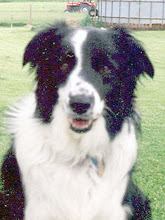Where was number eight?
I opened the hen house door, hoping to get a better view. Three Buff Orpingtons, three Buckeyes and one Silver Laced Wyandotte lifted their eyelids. The hens had settled onto the roost for the evening and were slumbering. The other Silver Laced Wyandotte was nowhere to be found.
Could she be sitting on a nest somewhere? If she was, she'd make an appearance at feeding time in the morning.
She didn't show up in the morning.
The fox must be back.
Last summer, a fox killed six of our hens. I wanted to post a sign telling the fox to eat bunnies, but leave the chickens alone. But foxes can't read. Instead, we built the chicken enclosure and surrounded it with electric netting.
After several months, hoping the fox had gone elsewhere, we let the hens out to free range again. For months, the hens have delighted in roaming the sheep and horses pastures, plucking dandelions, worms and bugs.
We had no losses until a few days ago. After a hen went missing, I confined the others to their fenced-in run and pondered how to outfox the fox.
A few days later, I found black and white chicken feathers in the horse paddock.
Maybe it wasn't a fox. Maybe it was a hawk.
Last summer, my friend told me how she saw a hawk swoop into the horse paddock and carry off a pigeon.
I wish the hawk would take all the pigeons, I thought at the time.
A few years ago, some pigeons escaped from a nearby farm, took up residence in our big barn and multiplied rapidly. Our pigeon eradication program--involving a gun and lots of arm flapping, yelling and running around the lofts was unsuccessful. This spring, we resorted to covering all of the hay and equipment with tarps to protect them from pigeon droppings.
While standing in the horse paddock, examining the chicken feathers, I realized that the pigeons were gone.
Had the hawk, upon running out of pigeons, swooped into the paddock, picked up the chicken, eaten it and said, "Hmmm, tastes like squab?"
Sometimes I think we paint our barns red, install four-board fences and plant flowers to distract from the messiness of farm life and nature. Birds and animals have to eat, and sometimes that means eating other birds and animals.
Try as I may, I cannot tell the wild animals to leave their claws off of the domestic ones. Nature doesn't work that way.
So,when I let the hens free range and roam free, I accept that one or more may die. When that happens, I confine them for a month or two, hoping the predator moves on and they can roam free again.
For now, the hens will remain confined to their small chicken run. In a month or two, I'll let them out, and in the evening, I'll count them. When I stop at six, then the confinement begins again.

















